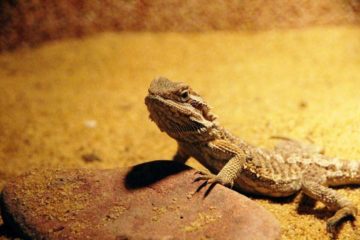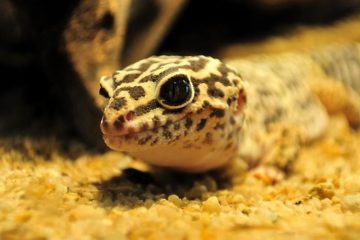Many hobby terrarists simply want to buy a Hermann tortoise without thinking about the fact that they need to buy an enclosure (or a terrarium for the younger ones), lights, food or even… the right substrate.
But what exactly is substrate?
Sommaire
What is a Terrarium substrate?
The substrate is the basic support on which the reptiles or amphibians in your vivarium live. It can also be the base on which plants grow, what they’re planted in in a terrarium. In short: the terrarium floor.
Some substrates are suitable for animals living in arid zones, such as calci-sand or excavator. Others are ideal for reptiles or amphibians living in humid and tropical zones, as they retain moisture (Sphagnum moss, vermiculite, hummus). Finally, some are better suited to aquatic or semi-aquatic animals.
But which substrates are suitable for a Hermann’s tortoise?
I’ve already briefly touched on this subject in the Testudo Hermanni breeding sheet (which I invite you to read), but here’s a more complete and detailed guide!
Which substrate to use for a Hermann Tortoise?
The Hermann tortoise or Testudo Hermanni is a reptile that lives in rather warm areas, with fairly high humidity levels (70%). It therefore needs a substrate suited to its natural biotope.
Substrates suitable for the Hermann’s Tortoise :
Now that you know which substrates are suitable for your Hermann’s Tortoise, let’s see why you should choose one over the other by analyzing the advantages of these different soils.
“Terre de Bruyère”
This substrate has several qualities that make it ideal.
First of all, heather earth is completely natural. It perfectly reproduces the type of soil on which a hermann tortoise could live in its original habitat. It also has the advantage of retaining water, providing a satisfactory level of humidity without encouraging the proliferation of bacteria. And last but not least, you can grow plants without any problem.
This is surely one of the best substrates for a Hermann tortoise,and you can mix it with potting soil (without fertilizer of course), and natural hemp soil.
- FERTILIGENE FBF40N Terre de Bruyère Forestière UAB 40 L -...
- La terre de bruyère forestière Fertiligène constitue le...
- Le mix parfait pour une croissance optimale. Avec un pH...
Tortoise Bedding (Lucky Reptile)
This substrate has been designed specifically for terrestrial tortoises by expert terrariophiles and zoological establishments. It retains moisture, is odorless and absorbs odors.
Its fibrous structure prevents shell abrasion, so it’s suitable as a substrate during wintering or when your Hermann tortoise is generally burrowing. He should have no trouble digging in it. Its PH is suitable for tortoises, it’s 100% natural, contains no fertilizers or chemicals, and is compostable.
An excellent choice, from a brand that specializes in reptiles. Just remember to moisten it if it dries out over time, and you’re good to go!
- lie les odeurs
- sans poussière
- meuble, creusable
Pine bark
Once again, this is a natural substrate, generally used in terrariums for juvenile tortoises, in quarantine, or during the off-season. It can also be used in enclosures.
It needs to be sprayed daily to maintain sufficient humidity or hygrometry (essential for juvenile tortoises). However, the soil doesn’t stick to the tortoises’ feet, and above all, pine bark doesn’t allow mold or bacteria to develop.
- Pour terrariums subtropicaux et tropicaux : substrat de sol...
- Sans pesticides
- Réduit la présence de germes et de champignons.
Substrates to avoid for a Hermann’s tortoise.
- Sand, gravel and pebbles
- Sawdust
- Coconut fiber
Although there are many substrates suitable for hermann tortoises, many can be very dangerous. Some simply won’t allow your tortoise to dig to protect itself from the cold, but others can cause its death! Such is the case with these.
Sand and sand equivalents
Sand, gravel and pebbles found on the ground or even in pet shops present a high risk of accidental ingestion and therefore a risk of intestinal obstruction and fatal prolapse!.
A reptile that eats sand (involuntarily or not), even in small quantities, risks death or severe stomach pains, not to mention the bacteria that may be present.
Sawdust
This substrate is not suitable for reptiles in general. It is suitable for rodents, and should be restricted to them. In fact, it’s not stable, and your tortoise won’t feel comfortable in it.
In addition, the risk of ingestion is again present due to its appearance, and digging in this substrate isn’t as natural and effective as those that are adapted.
Coconut fiber
While you might think of fibers as a suitable substrate for your tortoise to burrow in, they do represent a danger.
Once again, because of their fineness and appearance, these fibers present a considerable risk of ingestion and therefore of occlusion. On top of this, the dust generated by all these fine particles can be harmful to your tortoise.
How do you care for your tortoise’s substrate?
It’s absolutely essential to clean your Hermann’s tortoise’s substrate regularly, and to change it from time to time to avoid the development of bacteria or hygiene problems.
To achieve the recommended humidity level, you’ll need to moisten the substrate and the enclosure in general. A dry environment can be harmful to your hermann tortoise, especially if it’s a juvenile! Daily misting is a good practice, and you can automate it with a electronic mister set to 70%.
Finally, if you’ve chosen your substrate carefully from among those recommended in this article, you’ve got a 100% natural, fertilizer-free substrate (which is absolutely essential). To get rid of it when it’s used up, you can compost it.
Conclusion
As you can see, choosing the ideal substrate for your Hermann tortoise isn’t that simple. Between health risks, hygiene and comfort, you need to make the right choice, and be aware of the dangers that lie in wait for your Testudo hermanni.
There are therefore 3 main criteria to take into account:
- Limit ingestion risks
- Allow your tortoise to dig
- Be 100% natural, without fertilizers or chemicals
J’espère que ce guide vous aura aidé !


0 Comments